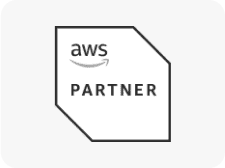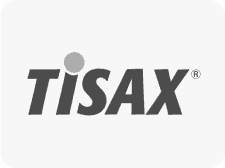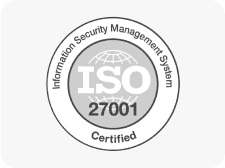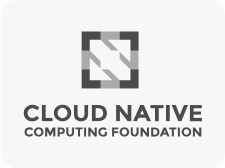Software Development
Data Science: Make your Data work
Mit Data Science lassen sich unentdeckte Potentiale ermitteln, Muster erkennen und Vorhersagen treffen. Nach einer explorativen Analyse treffen Sie Entscheidungen datenbasiert und können Ihre Prozesse optimieren und automatisieren.
Unsere Data Science Experten analysieren und erklären Ihre Daten und entwickeln, gemeinsam mit unseren erfahrenen Softwareentwicklern, moderne Lösungen. Dabei achten wir auf Datenschutzkonformität. Damit Sie nachhaltig von den Möglichkeiten künstlicher Intelligenz profitieren können.
Computer Vision
- Objekt Erkennung
- Segmentierung
Mit Hilfe von Computer Vision können Sie Objekte und Personen in Bildern erkennen und lokalisieren. Dadurch können Prozesse automatisiert und Workflows vereinfacht werden.
Data Analytics
- Datenintegration & -aufbereitung
- Visuelle und statistische Analyse
- Reports
- Dashboards
Wir fusionieren und bereinigen unterschiedliche Datenquellen und helfen Ihnen neue Erkenntnisse über Ihr Geschäftsfeld zu gewinnen.
Predictive Analytics
- Zeitreihenanalyse
- Anomalie Erkennung
- Predictive Maintenance
- Kundensegmentierung
Wir suchen nach Gruppierungen und Auffälligkeiten in Ihren Daten und nutzen gewonnene Erkenntnisse, um Vorhersagen zu treffen.
In drei Schritten zum Erfolg: Unser Vorgehen in Data-Sience-Projekten.
Wir nehmen Datenschutz ernst. Damit Sie dennoch einen Einblick in unsere Expertise bekommen, zeigen wir Ihnen anhand freier Datensätze unser Vorgehen und welche Rückschlüsse sich aus den jeweiligen Daten ziehen lassen.
Clustering & Anomalie Detection
Anhand unseres Open Food Facts Showcases zeigen wir Ihnen wie Sie mit Clustering Algorithmen natürlich auftretende Gruppierungen sowie seltene Beobachtungen – sogenannte Anomalien – aufspüren können. Letztere können fehlerhafte Nutzereingaben einer App sein oder seltene Produkte, im schlimmeren Fall aber auch Betrugsfälle oder Serverangriffe. Dadurch erlangen Sie tiefe Einblicke in die Struktur Ihrer Daten und können mit diesem Wissen, bessere Entscheidungen treffen. Mehr erfahren
Mit Neuronalen Netzen gegen Mikroplastik im Wasser
Die meisten Klärwerke sind nicht mit einer sogenannten vierten Reinigungsstufe ausgestattet. Diese kann dabei helfen, Arzneimittelreste und Kleinstpartikel wie Mikroplastik aus dem geklärten Wasser zu entfernen, bevor es in die Gewässer zurückgeführt wird. Da ihre Anschaffung und Betrieb teuer sind, ist es vorteilhaft, zuvor zu wissen, wie hoch die Belastung eigentlich ist. In dem interdisziplinären Forschungsprojekt VAMINAP helfen Künstliche Neuronale Netze bei der Schadstoffdetektion. Mehr erfahren
Mit Data Science Analysen den Kunden im Fokus
Anhand historischer Daten über Verkaufszahlen und Kundenaktivitäten können Sie durch Data-Science-Analysen einen tiefen Einblick in Ihre Geschäftsprozesse erhalten. Über Kundenvorlieben und Trends informiert zu sein, bedeutet auch teuren Lagerplatz zu sparen und gleichzeitig eine termingerechte Lieferung zu garantieren. Wie das geht, zeigen wir anhand unseres E-Commerce Showcases.
Erklärbarkeit von Machine Learning Algorithmen
Viele Machine-Learning Verfahren sind sogenannte Black-Box-Algorithmen, die keinen direkten Zugang zum Gelernten bieten. Dadurch bleibt zunächst unklar, ob man einer berechneten Vorhersage auch trauen kann. Hier helfen Tools zur Erklärbarkeit von Machine-Learning Algorithmen wie etwa LIME oder SHAP. In unserem Showcase zeigen wir, wie Sie durch ihren Einsatz den Prozess vom Sammeln der Daten bis hin zur Vorhersage debuggen und verbessern können.
Die Digitalisierung, ein ganzer Kosmos an Möglichkeiten! Wir finden heraus, welche davon für Sie die besten sind: Smart. Zukunftsweisend. Wertschöpfend. Brechen wir gemeinsam in Ihre digitale Zukunft auf – wir freuen uns auf Ihre Nachricht!






